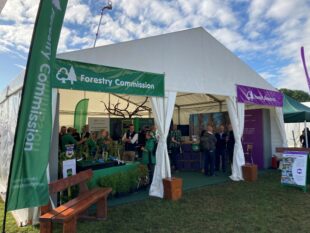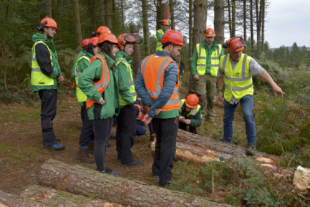 Emily Robinson, Content Officer at Forestry Commission, shares how wood ants act as a keystone species in promoting a healthy woodland ecosystem.
Emily Robinson, Content Officer at Forestry Commission, shares how wood ants act as a keystone species in promoting a healthy woodland ecosystem.
As spring awakens in the British countryside, a series of insects emerge from their winter rest to resume their tireless work. One of these insects, wood ants (Formica rufa), are architects of the forest floor and have been shaping Britain’s woodlands for years. They tell a complex story of survival and cooperation, and their presence as a ‘keystone’ and ‘indicator’ species tells us a lot about the health of our woodlands.

What are wood ants?
A wood ant is a type of ant that lives in forests and woodlands in Europe. You can find them trying to make the most of the sun in both coniferous and broadleaf woodland at this time of year, most often at woodland edges, along rides or in clearings.
The main species in England is the Southern wood ant and they build distinctive dome-shaped nests made from soil, twigs, leaves and sometimes pine needles. A colony can house up to a whopping 400,000 workers that are all descended from one or multiple queens.
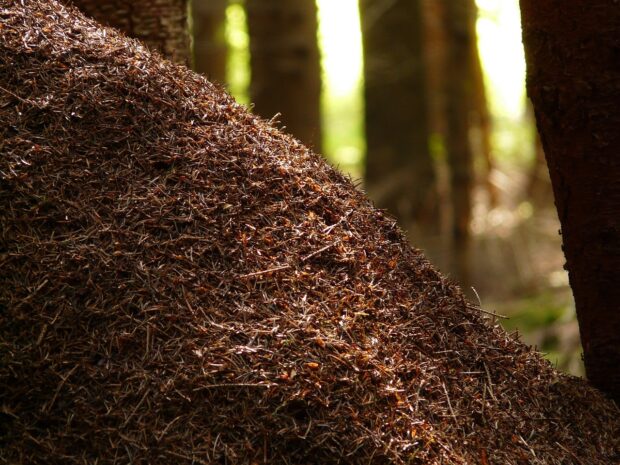
What they're doing in spring
As temperatures get warmer, the ants move from their deep winter nooks to the upper parts of their nest. You can see them gathering on the surface of their mounds on sunny days warming themselves up, forming a dark carpet that absorbs sunlight to heat the colony.
They immediately begin fixing up their nests after winter snow and frost damage. If you look closely at the forest floor, you'll see them furiously collecting plant materials to rebuild their mounds.
Worker ants reestablish their foraging trails to seek out protein-rich food like caterpillars, beetles, spiders and other insects, while also rekindling their relationships with aphid colonies.
In a bizarre act of symbiosis, wood ants 'farm' aphids by stroking their abdomens to encourage the secretion of honeydew, which is the excess sugary sap that aphids extract from plants. In return, the aphids escape being eaten and the ants protect them from predators like ladybirds. This is because when under attack, wood ants spray formic acid into the air that deters predators, which incidentally also smells like salt and vinegar crisps!
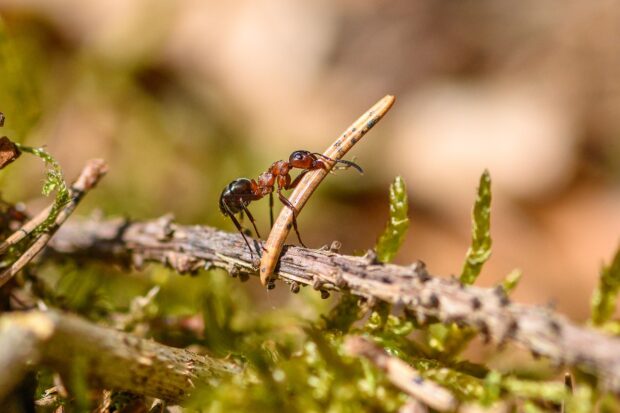
Wood ants and woodland ecosystems
Wood ants are a keystone species, which is any organism that holds its habitat together. Their presence promotes the health of a woodland ecosystem. Wood ants have several vital roles as:
- ecosystem engineers - they turn over lots of soil as they build their nests, which improves aeration and soil structure. These nests are unique microhabitats that support rare and specialised species such as the shining guest ant (Formicoxenus nitidulus)
- pest controllers - a single colony can eat up to 60,000 insects a day which maintains ecological balance in a woodland and prevents pest outbreaks
- bird hygienists - some types of bird perform a behaviour called ‘anting’ where they take a dust bath on ant nests to trigger the spray of formic acid. This can act as an insecticide or miticide
- seed distributors - they disperse seeds and can influence plant distribution
- food web stabilisers - they are prey for species such as woodpeckers, badgers and pine martens. They are also predators themselves and being in the middle of the food chain helps to balance food web dynamics
- nutrient cyclers - in and around their nests, nutrients like nitrogen and phosphorous are more concentrated, creating hotspots for plant growth
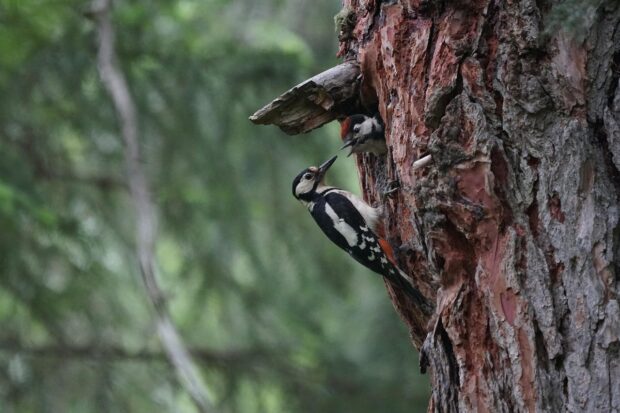
Clues to woodland health
Wood ants require diverse woodland habitat to establish colonies. They serve as ‘indicator’ species because their presence or absence reveals a lot about a woodland’s health. Their populations reflect changes in forest structure, pollution, habitat fragmentation and climate impacts.
They need trees with aphid colonies, prey diversity, and connected woodland patches for colony expansion. When wood ant populations decline, it often signals wider environmental issues affecting the entire woodland.
Supporting wood ant colonies in your woodland
Southern wood ants face many challenges in modern English woodlands, habitat fragmentation being the largest. Warmer winters also disrupt their hibernation patterns and increased rainfall can flood their nests. Excessive shade from unmanaged plantations prevent sunlight from reaching their nests.
You can help by managing your woodland to:
- maintain appropriate light levels through selective thinning
- retain aphid-rich trees that have 'trails' of ants leading up to them
- avoid large nest clusters if clearfelling is required
- clearly mark nests before operations to create buffer zones and communicate this to forestry operatives before starting any work
- retain deadwood near colonies for nest-building
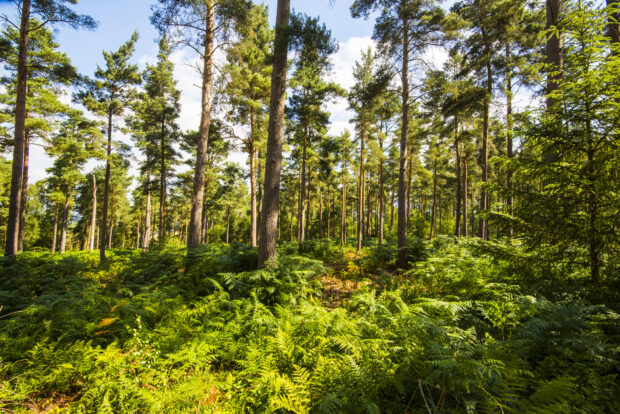
Wood ants are remarkable woodland engineers whose presence is crucial for healthy woodlands. By supporting their colonies through careful woodland management, you can help maintain the delicate balance of your woodland. Next time you're walking in the woods, look out for their distinctive dome-shaped nests – these busy architects might just be warming themselves in the spring sunshine!
Read Emily's blog on The benefits of mosses, liverworts and lichens and our GOV.UK page on How trees and woodland benefit nature.
All images are sourced from Pixabay with the exception of the last image which is Crown copyright.
